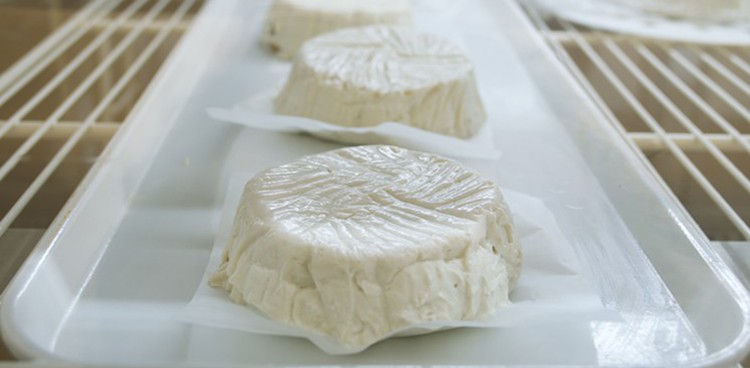
In this blog series, registered dietitian Marissa Donovan gives you the scoop on the latest nutrition science surrounding cheese. From the farm to the store and to your kitchen, she’s got you covered on what you need to know about cheese and your health. Check out previous posts on lactose intolerance, navigating the milk aisle, how much cheese is too much, and cheese and diabetes. Read on to learn more!
Cheese is one of the main reasons that many vegeterians haven’t made the full transition to vegan. Being a vegan used to mean very limited options, careful planning, and pretty restricted eating outside the home. These days, vegan food producers have really stepped up their game. Products are popping up all over bearing the vegan label, and vegan cheese is becoming a major player. Regardless of one’s reasons for being vegan or level of adherence, vegan cheese helps expand eating possibilities vastly.
At first read, vegan cheese seems like a bit of an oxymoron, since vegan means dairy free and cheese is made with dairy. So what is vegan cheese actually made with? The short answer is mixtures of vegetable protein (think soy and pea), or nut and seed milks. Vegan cheese has a different texture and flavor than traditional dairy cheese; in fact, many consider it an entirely separate food category.
The jury is still out regarding whether vegan cheese is healthier than regular cheese—essentially it comes down to what is in each individual cheese. Some vegan cheeses are highly processed, contain harmful additives, and are high in fat and sodium. However, the same can be said for some types of regular cheese. If you want to make sure you’re getting a good product, vegan or not, flip it over and look at the ingredient section. Product ingredients are listed in descending order, meaning whatever the largest quantity of any ingredient in the food is listed first, and so on.
Look for a vegan protein source as one of the first ingredients of your vegan cheese and animal dairy as one of the top ingredients for non-vegan cheeses. Take a look through the rest of the list to be sure all are things you are comfortable eating. Many health professionals recommend things like “don’t eat anything you can’t pronounce” or “don’t eat things with over five ingredients,” which are good rules of thumb, with exceptions.
Below is an example of Kite Hill’s Vegan Ricotta:
 And the ingredient list of Vermont Creamery’s Fresh Goat Cheese:
And the ingredient list of Vermont Creamery’s Fresh Goat Cheese:
 If taste is what you question, don’t eat vegan cheese expecting it to be a mirror of traditional cheese—you will likely be disappointed. It is difficult to get the same taste, look, and feel of regular cheese without using animal products, including rennet. With that said, there are many tasty vegan versions.
If taste is what you question, don’t eat vegan cheese expecting it to be a mirror of traditional cheese—you will likely be disappointed. It is difficult to get the same taste, look, and feel of regular cheese without using animal products, including rennet. With that said, there are many tasty vegan versions.
And for any ambitious readers, you can even make your own vegan cheese using a few simple ingredients. For example, check out Fork and Bean’s recipe for Raw Vegan Goat Cheese Dip.




